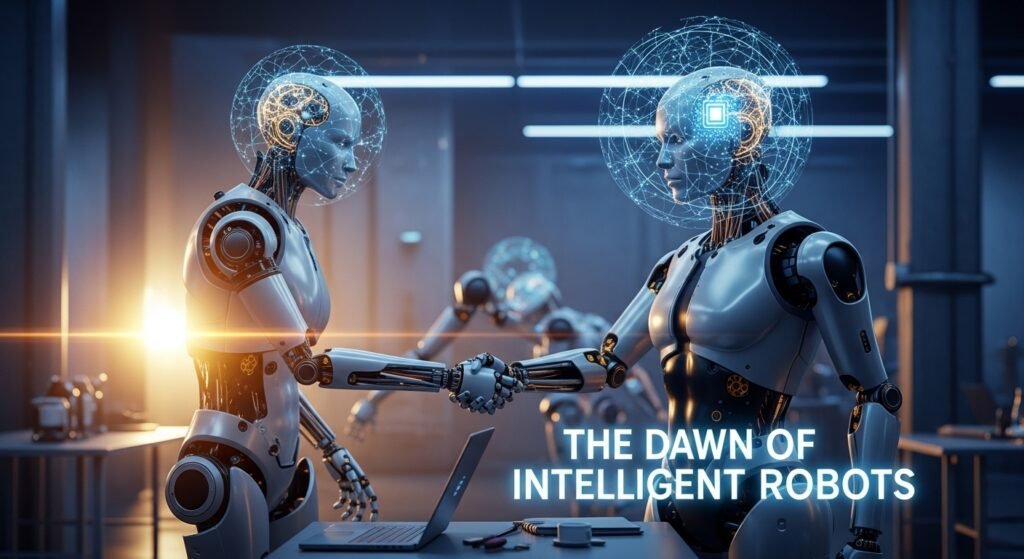
Introduction
For decades, Boston Dynamics has been a leader in robotics, creating machines that stunned the world with their agility and strength. From backflips to parkour, their humanoid robot Atlas became a symbol of what was mechanically possible. Yet, despite these jaw-dropping physical feats, one crucial element was missing: intelligence. Atlas could move like a human, but it couldn’t think like one.
That is now changing. In a historic collaboration, Boston Dynamics has partnered with Google DeepMind, integrating the Gemini 2.0 large language model (LLM) directly into Atlas’s system. This is not just a technical upgrade—it is a revolutionary step toward merging the body of robotics with the brain of artificial intelligence.
What Exactly Changed?
In the past, robots like Atlas were powerful but rigid. They could only perform tasks that were carefully programmed into their code. Every movement—whether lifting a box or walking across uneven ground—had to be explicitly designed by engineers.
Now, with Gemini 2.0, Atlas no longer relies solely on pre-programmed instructions. Instead, the robot can:
- Understand natural language commands directly from humans.
- Analyze its environment using sensors and computer vision.
- Make real-time decisions about how to execute a task safely and efficiently.
This shift transforms Atlas from a mechanical performer into a thinking collaborator.
The Demo Video: A Glimpse of the Future
The partnership was showcased in a new demo video that left viewers amazed. In the video, an engineer casually tells Atlas:
“Hey Atlas, I’m feeling a bit thirsty. Can you bring me the water bottle from the table?”
What happens next demonstrates the power of combining robotics with AI:
- Environment Scanning: Atlas looks around, identifying objects on the table.
- Object Recognition: Among several items, it correctly pinpoints the water bottle.
- Action Execution: Atlas picks up the bottle carefully and begins walking toward the engineer.
- Unscripted Adaptation: On the way, Atlas encounters a toy car lying on the floor. Without being told, it instinctively avoids stepping on it, changing its path to ensure a safe delivery.
This unscripted, adaptive behavior is what makes the demonstration so groundbreaking. It shows that Atlas can handle not only the command itself but also the unexpected challenges along the way—a hallmark of real intelligence.
Why This Matters: Body + Brain
This achievement is more than just a technological milestone. It represents the fusion of two worlds:
- Robotics (the body): Strong, flexible, and capable of physical action.
- Artificial Intelligence (the brain): Able to perceive, reason, and communicate in natural language.
Until now, robots were mostly strong but dumb. They excelled in physical power but lacked cognitive abilities. By adding an AI “brain,” robots are evolving from tools that follow instructions into partners that understand context.
Potential Applications
In Homes and Daily Life
Robots like Atlas could become household assistants—fetching items, cleaning, or even helping the elderly with everyday tasks. Instead of programming them, people could simply say, “Atlas, please set the table for dinner.”
In Healthcare
Imagine hospitals where humanoid robots assist nurses, deliver medical supplies, or provide support to patients—all while understanding spoken instructions in real-time.
In Industry and Logistics
Factories and warehouses could benefit from robots that not only lift heavy loads but also adapt to unexpected obstacles, making operations safer and more efficient.
In Disaster Relief
Robots that understand both language and environment could play a role in search-and-rescue missions, entering hazardous areas and responding to instructions like, “Look for survivors under the collapsed structure.”
Challenges and Concerns
Of course, such powerful technology raises important questions:
- Safety: Can we trust humanoid robots to make decisions around humans without accidents?
- Ethics: How do we ensure robots are used responsibly and not for harmful purposes?
- Control: Who decides what limits to place on AI-powered robots?
These are challenges society must address as robots become more intelligent and integrated into our lives.
Conclusion
The partnership between Boston Dynamics and DeepMind is more than a collaboration—it’s a turning point in the history of robotics. Atlas, once a machine known for its gymnastic skills, now has the ability to listen, understand, and act like a human partner.
This is the beginning of a future where robots will not only exist in factories but also in homes, hospitals, and public spaces, working alongside people in meaningful ways. The era of robots with both muscle and mind has begun.
👉 The question is no longer “Can robots think?”—it’s “How will we live with them once they do?”
